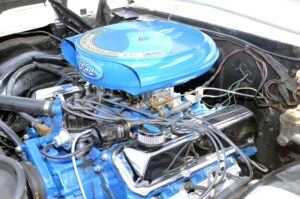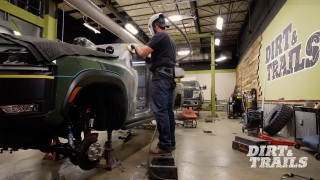How Quality Brakes Are Made
When adding upgrades like horsepower or heavier wheels and tires, improving stopping ability is also important. EBC Brakes offers a wide variety of high-performance rotors and pads that fit several different applications. But have you ever wondered how they’re made?
We traveled to their headquarters in the U.K. to find out! The process starts by weighing out the necessary ingredients. Each specific color of brake pad uses different ratios and amounts of each ingredient to give it characteristics like heat resistance or durability. Once the ingredients are mixed together, they’re pressed into a mold that matches the shape of the vehicle’s application. The backing plates start out as large coils of steel before they get loaded into a punch press which stamps out the shape of the plate.
The next step is to have the texture pressed into the back of the backing plate which helps the friction material bond with the plate. Then a quick coat of adhesive is sprayed on. Then it’s time to join the backing plate to the friction material.
A machine applies heat to bond the two materials together. Then the pads are pressed out of the press mold and make their way to an oven to cure. After they’re cured the brake pads are then ground to their final height. Down the production line, a groove is cut down the middle before receiving their final color on their last trip down the conveyor belt.
EBC Brakes pads come in several different grades, each distinguished by its own color. Each pad is baked, then cooled and labeled before a braking coating is applied which helps the pads burnish into the rotor. Then the pads are labeled one more time and stacked up to await final packaging. Before they get shipped to parts stored worldwide, EBC thoroughly tests all of its braking compounds. For more product information check out EBCBrakes.com.









